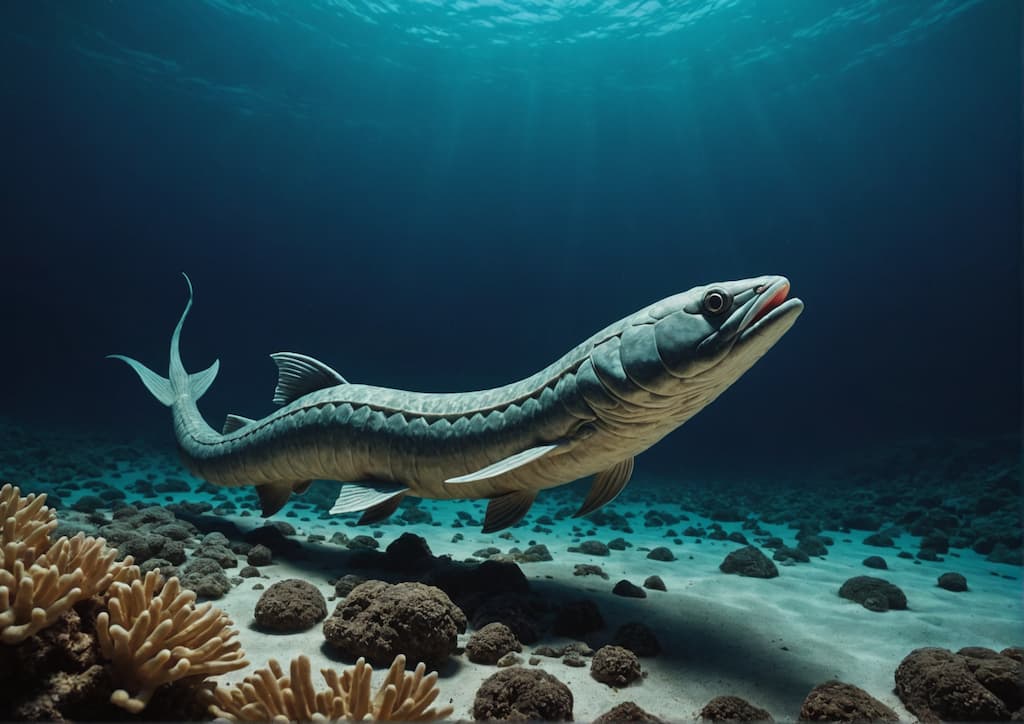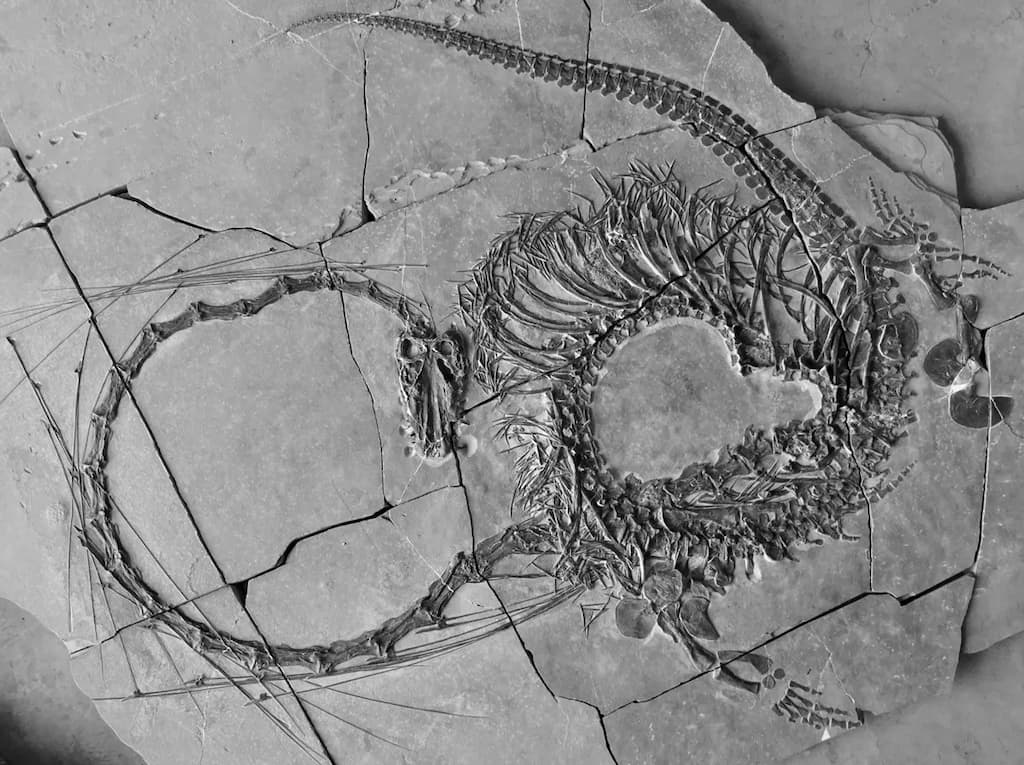A creature with the elongated elegance of the dragons illustrated in ancient myths swam in the vast ocean of the territory we now know as southwestern China. This being, which would reign in the seas about 240 million years ago during the Triassic, emerged from the shadows of history thanks to an extraordinary paleontological feat. From the depths of the geological past emerged the Dinocephalosaurus orientalis, a marine animal whose integrity was first known through meticulous work spanning a decade.

The mysterious Chinese dragon.
He Dinocephalosaurus orientalis, a species first identified in 2003, remained an enigma to the scientific community, given the limitations of the partial remains discovered until then. Over years of exploration, scientists accumulated various fossil specimens, but they were missing the key piece that would allow them to piece together the enigmatic puzzle of its anatomy.
This veil of mystery began to be lifted thanks to recent finds that included five newly discovered specimens, one of them completely articulated. All come from the paleontologically rich area of Guizhou, a southern province of China famous for its ancient treasures preserved in stone.
Sea dragon anatomy.
Paleontologists were surprised to reveal an animal with a much longer neck than expected, giving it a serpentine and sophisticated appearance. “This reconstruction gives us, for the first time, a comprehensive look at this remarkable long-necked animal,” said Nick Fraser, custodian of natural sciences at National Museums Scotland. The affinity of his figure with the dragons of Chinese legend only intensifies the global interest and fascination towards this discovery.


The project The research that has shed light on this prehistoric being is the result of international collaborative work. Scientists from several nations, including Scotland, Germany, the United States and China, concentrated efforts at the Institute of Vertebrate Paleontology and Paleoanthropology in Beijing. For more than ten years, these experts dedicated their wisdom and efforts to carefully studying the mosaic of fossils, a task that bears fruit today.
The life of the Chinese dragon in prehistory.
Fossil evidence indicates that the Dinocephalosaurus orientalis was perfectly adapted to life in the ocean. The skeletal remains adjusted to their swimming abilities provide testimony of a submerged life. Furthermore, the discovery of fish bones within the stomach region of some specimens provides conclusive clues about their marine diet based on the ingestion of aquatic creatures.
Although they share physical characteristics with plesiosaurs, such as long necks, researchers emphasize that the “Chinese dragon” is not closely related to these last aquatic reptiles that appeared around 40 million years later. Without a doubt, this prehistoric marine reptile adds another chapter to the incredible story of fossils that continue to be discovered in China, raising admiration and amazement in the field of paleontology.
This revolutionary discovery not only redefines what we knew about the Dinocephalosaurus orientalisalso illuminates the prehistoric conditions of its marine environment.






